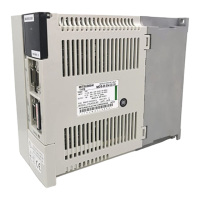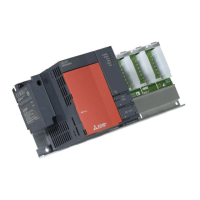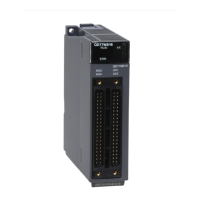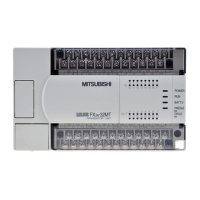Chapter 11 Selection
11-3
(2) Rated speed
Even with motors having the same capacity, the rated speed will differ according to the motor.
The motor's rated output is designed to be generated at the rated speed, and the output P (W) is
expressed with expression (11-1). Thus, even when the motors have the same capacity, the rated
torque will differ according to the rated speed.
P = 2πNT (W) .................................................. (11-1)
N : Motor speed (1/sec)
T : Output torque (N⋅m)
In other words, even with motors having the same capacities, the one with the lower rated speed will
generate a larger torque. When actually mounted on the machine, if the positioning distance is short
and the motor cannot reach the maximum speed, the motor with the lower rated speed will have a
shorter positioning time. When selecting the motor, consider the axis stroke and usage methods, and
select the motor with the optimum rated speed.
If the maximum speed is larger than the rated speed, such as with the HC-SF, HC-RF, HA-FF or
HC-MF, the continuous characteristic torque over the rated speed will be lower than the rated torque
due to the relation of the expression above.
11-1-2 Regeneration methods
When the servomotor decelerates, rotating load inertia or the operation energy of the moving object is
returned to the servo amplifier through the servomotor as electrical power. This is called
"regeneration". The three general methods of processing regeneration energy are shown below.
Table 11-2 Servo amplifier regeneration methods
Regeneration method Explanation
1. Condenser regeneration
method
This is a regeneration method for small-capacity amplifiers. The
regeneration energy is charged to the condenser in the amplifier, and this
energy is used during the next acceleration.
The regeneration capacity decreases as the power supply voltage becomes
higher.
2. Resistance regeneration
method
If the condenser voltage rises too high when regenerating with the
condenser only, the regenerative electrical power is consumed using the
resistance. If the regeneration energy is small, it will only be charged to the
condenser. Because regeneration energy becomes heat due to resistance,
heat radiation must be considered.
In large capacity servo amplifiers the regenerative resistance becomes
large and this is not practical.
3. Power supply regeneration
method
This is a method to return the regeneration energy to the power supply. The
regeneration energy does not become heat as in regenerative resistance.
(Heat is generated due to regeneration efficiency problems.)
The circuit becomes complicated, but in large capacity servo amplifiers
having large regeneration capacity this method is more advantageous than
resistance regeneration.
The condenser regeneration method and resistance regeneration method are used in the
MDS-B-SVJ2. For amplifiers (SVJ2-03 and higher) driving motors of 200W or more, the regenerative
resistor is mounted in the amplifier as a standard. If the regenerative capacity becomes large, an
option regenerative resistor is connected externally to the amplifier. (Combined use with the built-in
resistor is not possible.)
When the power supply regeneration method is used, consider using the MDS-C1-V1/V2 +
MDS-C1-CV Series.
POINT
The MDS-B-SVJ2-01 (100W) uses condenser regeneration as a standard. A
built-in regenerative resistor is not mounted.

